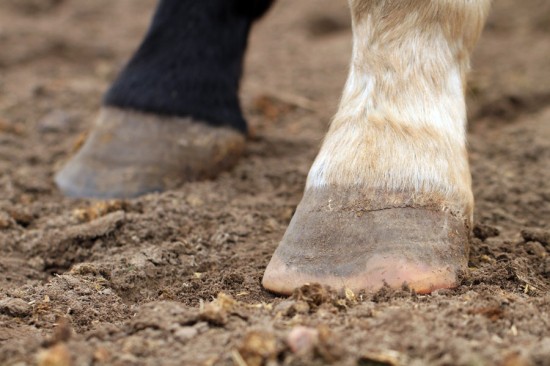

Asthma in dogs can be a complex and challenging condition, not least because no two presentations of it are the same, and how badly or how regularly any given dog is affected by it can vary considerably. Asthma in dogs is largely considered to be an allergenic condition, which means that it is apt to flare-ups and periods that are worse than others, and can regularly go without symptoms for many months before another problem presents itself.
Because asthma in dogs is commonly affected by external allergenic triggers, getting to know what does or may possibly affect your dog can provide you with valuable information that can help you to control your dog’s asthma, and manage attacks when they happen.
Read on to learn more about six of the most common asthmatic triggers in dogs.
Asthma attacks in dogs manifest as dry coughing and potentially, wheezing attacks, due to the irritation of the bronchi of the lungs. Such irritations are generally caused by the inhalation of a certain sensitivity trigger, leading to the body’s immune system producing an inflammatory response at a cellular level in protest against the perceived threat.
This ultimately results in the swelling of your dog’s respiratory tract and airways, leading to them becoming restricted and making breathing harder. This in turn leads to the panting, coughing and respiratory discomfort that you will observe when your dog is being particularly affected by their asthma.
While any breed or type of dog may suffer from asthma and it is not a breed-specific condition, brachycephalic breeds, including the Pekingese and the Cavalier King Charles spaniel are likely to suffer more acutely from asthma attacks, should they suffer from asthma, than other breeds, as their airways are already generally shorter and narrower than the norm already.
The most common triggers of canine asthma tend to be things like dust or pollen, which are obviously hard to avoid! However, a range of other things can trigger asthma as well, and some of the most common culprits are detailed below.
No matter how clean your house is, dust mites will be present to some degree, and these microscopic organisms feed and reproduce on shed skill cells from people and dogs, and also general household dirt. You can keep the level of dust mites within your home to a minimum by means of regular cleaning and disposing of dust outside, and also using both an air filter and a vacuum cleaner that makes use of HEPA air filter technology.
Anti-static dusters and cloths can also help to attract dust particles for removal outside of the home, rather than just shuffling them around the house!
Grass and pollens are one of the most frequently diagnosed allergenic triggers in asthmatic dogs, and obviously, keeping your dog totally away from such triggers is essentially impossible. Because plant growth goes through distinctive seasons and dormant periods, asthma related to grass and pollen is likely to be worse at some times of the year than others, and autumn and spring tend to be the most acute times of the year for flare-ups.
In order to keep pollen and grass-related asthma under control, you are rather limited in what you can do, but keeping your own home free of plants, having a paved yard rather than a garden, and using air filters and purifiers within the home can all help.
When your dog comes back from a walk, wiping their coat off with a damp cloth can also help to remove pollen and spores that have adhered to the coat itself, reducing the risk of your dog ingesting more pollen when they groom themselves.
Just as certain chemical compounds can lead to allergies and related problems in people, so too can they trigger asthma attacks in sensitive dogs. A huge range of potential chemical triggers for canine asthma can be found in the average UK home, which may include, but is not limited to, things like washing powders and fabric conditioners, air fresheners, paint, perfume and aftershave, scented bath products, cleaning chemicals, and skin care products.
Even certain types of flea and tick treatments and preventatives can lead to asthma attacks in sensitive dogs, and so special care must be taken when buying such products for your dog.
Everyone knows that smoking is bad for people, dogs and other animals too, and you should never smoke in a home with a dog or even smoke around your dog when outside. However, cigarette, cigar and pipe smoke are not the only types of smoke that can make your dog uncomfortable, and an open fire or solid fuel stove can all generate smoke (even if this is within safe levels in terms of carbon monoxide exposure) that may affect particularly sensitive dogs.
Using other forms of heating and of course, making your home a non-smoking zone are all highly effective ways to prevent your asthmatic dog from having related attacks.
Certain ingredients in both dog food and human food can, in some cases, trigger canine asthma, and this can be one of the hardest triggers to identify and remove from your dog’s diet. Even the cooking smells of certain foods can trigger off asthma in affected dogs, and so this is one of the situations in which working with your vet to identify the specific product that is causing the issue is wise.
Sand is the final trigger that can potentially lead to canine asthma attacks, and one that many owners of asthmatic dogs are not aware of! Generally, it is the silica that is naturally present in sand that causes such problems, and so this means avoiding the beach, sand pits, and even building sites that are using sand to mix concrete.
 Airline Travel And Your Dog
Airline Travel An
Airline Travel And Your Dog
Airline Travel An
 The process of moving to Singapore with dogs- what you need to know
The process of moving to Singapore with dogs- what you nee
The process of moving to Singapore with dogs- what you need to know
The process of moving to Singapore with dogs- what you nee
 New Mini Microchips For Domestic Pets Launched
New Mini Microchi
New Mini Microchips For Domestic Pets Launched
New Mini Microchi
 Understanding Laminitis - An Essential Horse Owners Guide
Understanding Lam
Understanding Laminitis - An Essential Horse Owners Guide
Understanding Lam
 K-laser Therapy In Pets
K-laser Therapy I
K-laser Therapy In Pets
K-laser Therapy I
Copyright © 2005-2016 Pet Information All Rights Reserved
Contact us: www162date@outlook.com